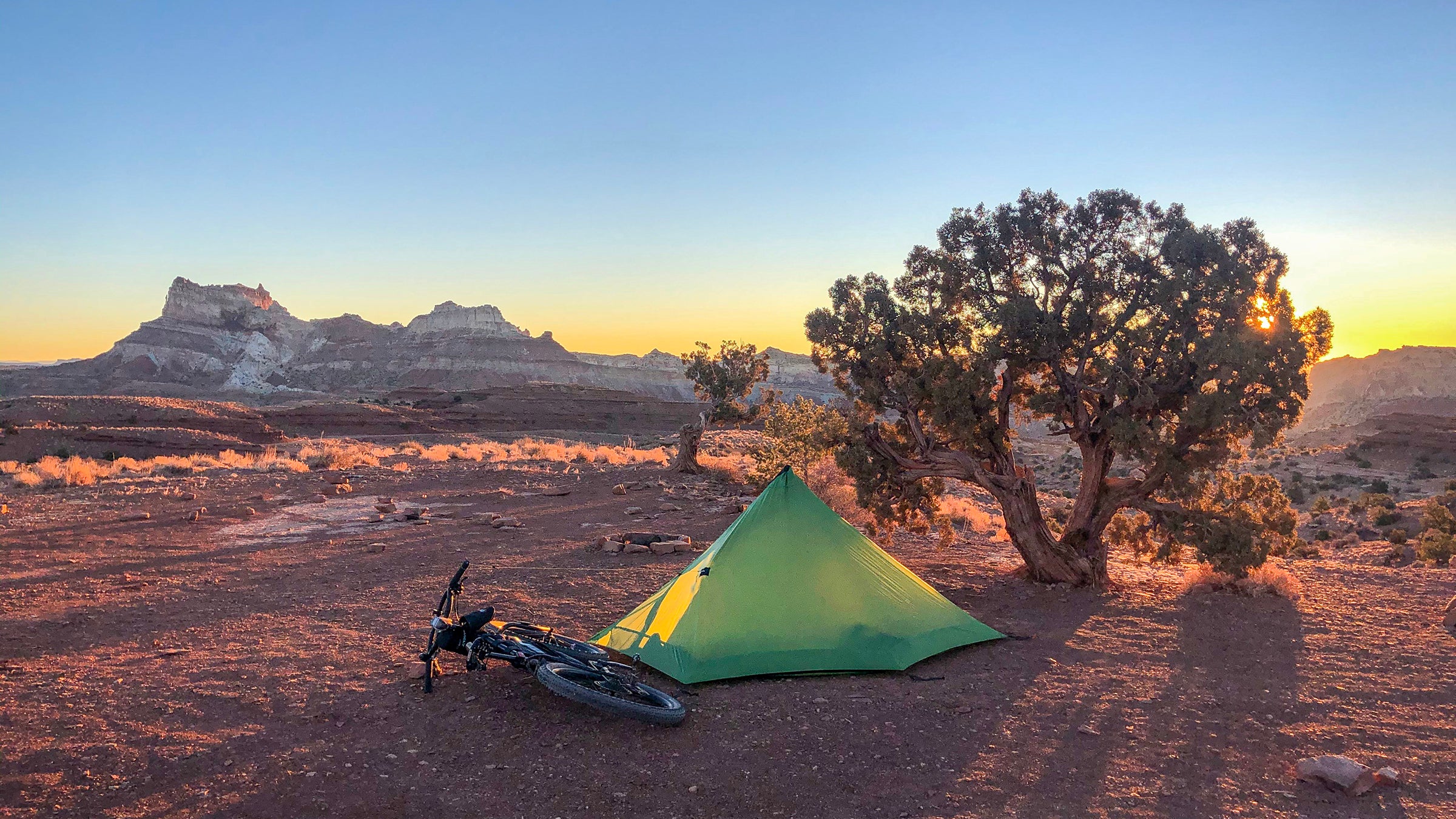Forest Road Wilderness: Why You Should Try Bikepacking

Bikepacking in Utah's San Rafael Swell (Photo: Casey Lyons)
The final climb up this hill is grueling, but I’ve been anxious to get above the canopy all day. Picking through the emerald-colored pine trees and oaks tinged with the first tangible clues of fall, I get my first big view: A carpet of densely-packed hardwoods making up what’s known as the “cradle of American forestry.” In the distance, the grey dome of Looking Glass Rock stands out from the other tree-covered rolling hills. And slicing through the trees in seemingly random locations are faint indents like ripples in the forest. And somehow, there’s no one around to share the scene.
Looking down, I’m reminded of something that doesn’t typically pair with solitude: a gravel forest road. I’ve been bikepacking on the doubletrack hidden beneath those ripples for the last day and a half, passed trickling, mossy Appalachian brooks, camping like a moonshiner in wooded hollows (pronounced “hollers”) hidden between ridgelines, stopping to gaze at small waterfalls spitting their makeup over sheets of shale, and looking out at unnatural rock domes.
I’ve never really thought of gravel forest roads as a destination in and of themselves. They’re more commonly just a route to the trailhead or, if you have the right vehicle, a way to limit the hiking necessary to get to your destination. But in places like North Carolina’s Pisgah National Forest, even though I’m just minutes outside Asheville, they’re really no less wild, quiet or rugged than hiking trails. The main difference? They’re wider and you can bikepack on them.
Compared to other bikepacking locales where you might be forced to share infrastructure with cars, my only company on this trip is the occasional slow-moving pickup truck featuring a couple hound dogs in the back and a jovial driver who gives me a thumbs up as I step off to the side of a long hill to let him pass. On my feet, I would have been lucky to have covered 15 miles in the last day and a half—an eternity on wider paths where you can see further ahead of you—but on my bike at a relatively leisurely pace, I’ve nearly doubled that, and seen twice as many sights in the process.
After a few more hours of gravel grinding (biker lingo that was explained to me before I started this weekend), I decide it’s time to start looking for camp, and it doesn’t take long to find a suitable dispersed spot between the road and a small creek. The stream is sunken deep enough in the soft soil that I can sit on the edge and let my feet dangle over the water percolating through a mix of mud, sticks, and small stones. My legs are sore from pushing uphill and my forearms are sore from gripping the brakes on the way down. But by the end of the weekend I’ll have biked more than 60 miles across the Pisgah, passing in and out of small rural villages, through miles on miles of pristine tunnels through the forest, camping next to quiet, murky streams, chasing deer from my path, and seeing more of the Appalachians than I could by foot in the same time, all without sacrificing the tranquility of a narrow trail to the wilderness.
If you’re getting to know a place, there may not be a better way to do it than on a bike, and a bumpy forest road might be a surprising avenue into the untamed.